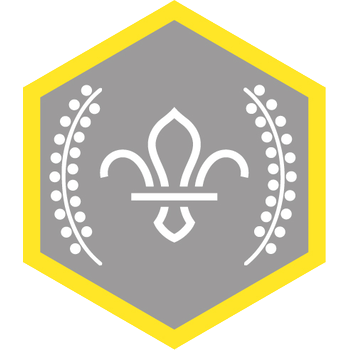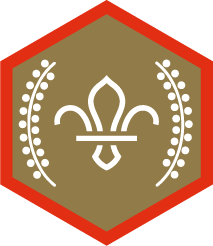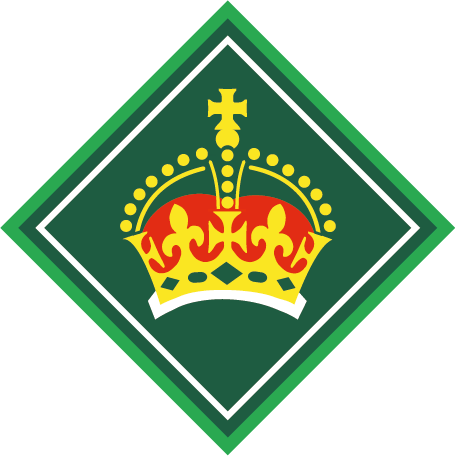
Journey for autism-friendly change
You’ll need
- Pens or pencils
- Flipchart paper
Before you begin
- Use the safety checklist to help you plan and risk assess your activity. Additional help to carry out your risk assessment, including examples can be found here. Don’t forget to make sure all young people and adults involved in the activity know how to take part safely.
- Make sure you’ll have enough adult helpers. You may need some parents and carers to help if you’re short on helpers
Running the activity
- Draw a start line and a finish line on the big sheet of paper. They should draw a road between them, and a car on the road near the start line. This can be done in small groups or as one big group, and flipchart paper would be great for this.
- Explain the picture, which represents the journey for change. Starting from the challenges or barriers autistic people face in society, it shows how everyone can work towards a more autism-friendly society.
- Make sure everyone understands what each part of the drawing means. The start line is the challenges and barriers autistic people face in society at the moment. The finish line is what an autism-friendly society looks like. The road is the steps that everyone needs to take to get there. The car and its passengers are all the people who need to work together to make the journey happen. For shops, an example would be:
- For the start line: one barrier could be shops with glaring lights and loud music that many autistic people find painful or distressing.
- For the finish line: an autism-friendly society could mean having slots of times when shops turn down their music and dim their lights, or even make this a permanent change.
- For the road: the steps could involve shops becoming aware of the issue, staff speaking to managers, managers finding out how to dim the lights, choosing a time to try it, and advertising it.
- For the car and its passengers: the people who’d need to work together could be everyone in this activity to spread the word, the people in the shops and their managers to take action, and local advocates or charities to spread the word.
Coming up with ideas
- Everyone should split into four teams, and each team should find a space.
- Give each team a part of the drawing: the start line (barriers), the finish line (the changes), the road (the steps involved), and the car with its passengers (the people who need to work together).
- Each team should think about some examples for their section around different areas of the community, such as shops, schools, libraries, hairdressers, leisure centres, entertainment centres, train stations or something else.
Bringing together ideas
- Once the teams have thought of plenty of examples, everyone should gather together to share ideas. If there’s time, the person leading the game could give each group a different part of the drawing to think of even more ideas.
- Together, everyone should think about one or two challenges they’d like to tackle, the steps they need to take, and the people they need to involve. Everyone should make a plan that helps their community take action and become more autism-friendly.

This activity helps contribute towards some of the UN's Sustainable Development Goals. Find out more about the SDGs, and how Scouts across the world are getting involved.


Reflection
This activity needed everyone to problem-solve. It broke down big problems into more manageable steps towards a solution, and gave everyone the chance to think about who would need to be involved. Could a similar approach work for other problems people face?
Sometimes huge problems can be fixed and huge changes can be achieved with lots of smaller adjustments. Were some of the steps on the journey easier to achieve than others?
This activity was also about helping the community. People will probably need help of others to achieve the change, but it started with their ideas and plan. Who else in the community could get involved?
People could think about those who may have the biggest impact such as business owners, MPs and community leaders.
Why's it important for people to speak up and make changes, even when an issue doesn’t affect them personally? What differences would it make for autistic people if everyone took steps towards the finish line of an autism-friendly community?
Safety
All activities must be safely managed. You must complete a thorough risk assessment and take appropriate steps to reduce risk. Use the safety checklist to help you plan and risk assess your activity. Always get approval for the activity, and have suitable supervision and an InTouch process.
The person leading the game doesn’t have to draw in step one – they could ask people to volunteer, and different people could draw each part of the picture.
If people are struggling to come up with ideas, you could give them a prompt, scenario or setting to focus on. You may want to run the activity Spot the difference before running this activity, too.
Why not take the analogy even further? You could think about the engine that powers the car – what do the car and its passengers need to power them along to complete the journey for change?
If anyone’s autistic (or has a close friend or family member who is), you might want to chat to them (and perhaps a parent or carer) before you do this activity and make a few tweaks so they feel comfortable joining in.
All Scout activities should be inclusive and accessible.





